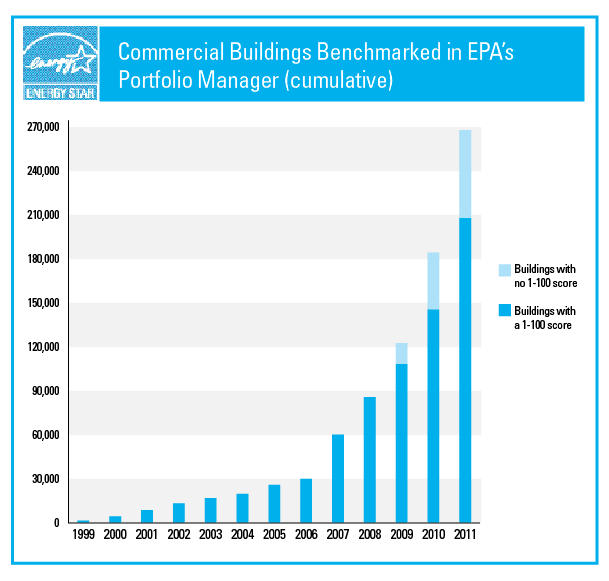Energy Star Portfolio Manager Helps Reduce Energy Expenditures
If you've noticed your facility's energy costs inching up, you're not alone. Average annual energy expenditure per square foot of commercial space rose by about 18 percent between 2000 and 2010, according to the 2011 Buildings Energy Data Book prepared by the U.S. Department of Energy (DOE).
Given that building owners and managers can't count on the price of energy dropping, using it as efficiently as possible becomes even more important to a healthy bottom line. That's where the Portfolio Manager tool, part of the Environmental Protection Agency's (EPA) Energy Star program, comes into play. The application is allowing facility managers to track energy and water use across a portfolio of buildings.
Portfolio Manager has proven itself to be an effective tool for facility managers, says Nicholas Stolatis, senior director of global sustainability with financial services firm TIAA-CREF, where he manages sustainability initiatives for about 220 facilities. Stolatis and his colleagues measure energy use both before and after making improvements or installing energy-efficient equipment. "Portfolio Manager is a wonderful tool for that purpose," he says.
"You can get, with one simple metric, an important insight to your building's operation," says Jean Lupinacci, director of the Energy Star commercial and industrial branch.
At year-end 2011, 270,000 buildings were using Portfolio Manager. At 28 billion square feet, that represents about 40 percent of the square footage of all commercial buildings in the U.S., Lupinacci says. About 16,500 of these buildings were Energy Star certified.
Studies have shown that Energy Star certified buildings use about 35 percent less energy than the typical office building, says Lupinacci. That translates to lower operating costs for tenants.
In just the last four quarters, TIAA-CREF has avoided about $16 million in energy costs across its portfolio of about 150 office buildings, says Stolatis. Portfolio Manager "allows us to gauge (energy) performance over time."
That's because Portfolio Manager "normalizes" data to account for changes in the weather or energy rates or a building's operation, among other parameters. Without normalization, it becomes difficult to determine whether a fluctuation in energy expense is due to a change in consumption or simply a change in the cost of fuel, Stolatis says.
So far, TIAA-CREF has focused primarily on pursuing no-cost and low-cost energy saving opportunities, such as making sure building systems aren't turned on over the weekend, Stolatis says. "These don't cost anything, but they're significant energy savers."
Some prospective tenants also consider the Energy Star label a proxy for the building's operations in other areas. "It's a great message and platform to have as a building owner," Stolatis adds.
Another likely reason for the growth in Portfolio Manager is the small but growing number of state and local mandates regarding energy efficiency. Energy Star and Portfolio Manager offer an industry-accepted approach to measuring energy use, Lupinacci says.

Related Topics:















